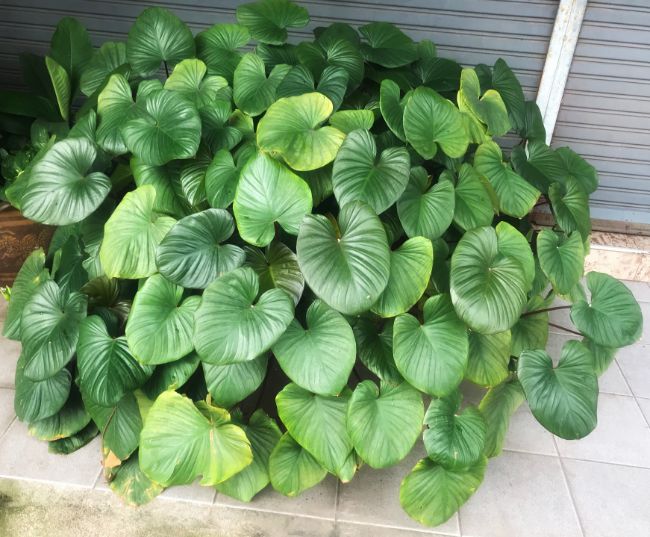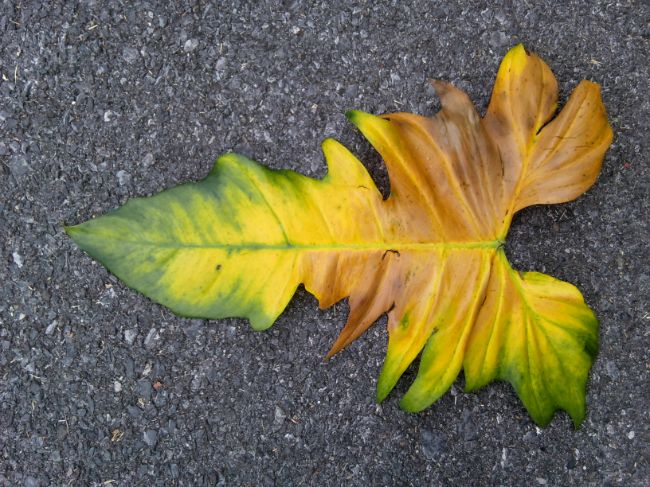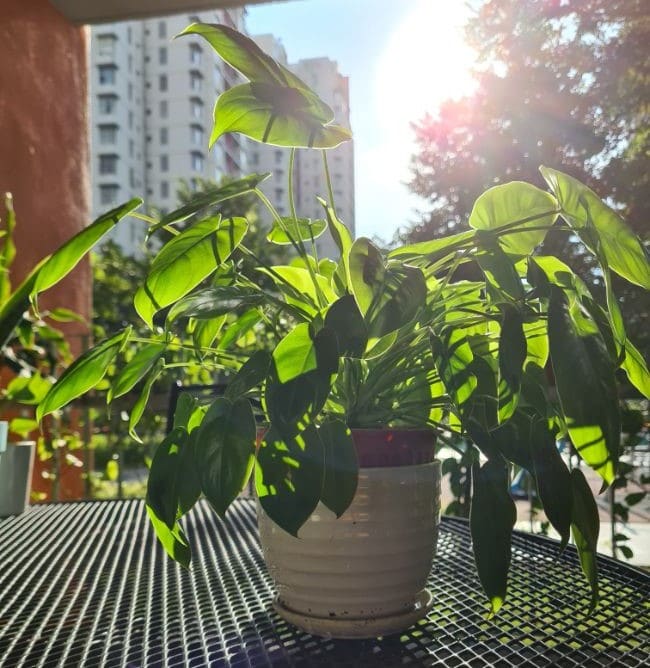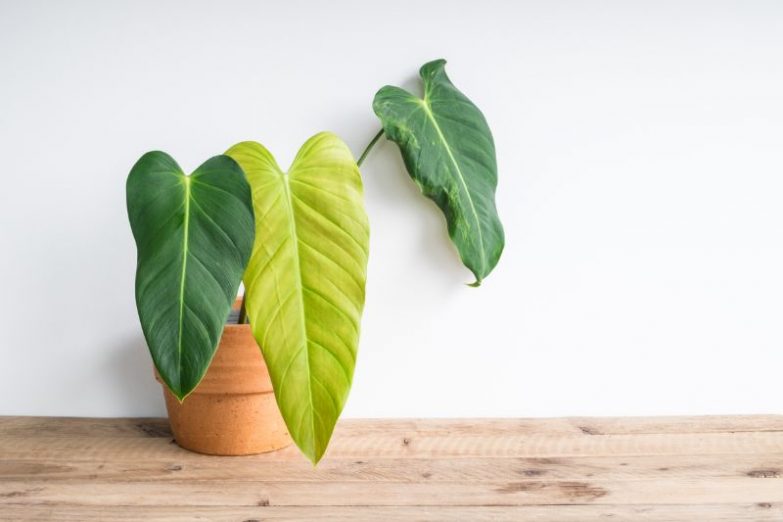Philodendrons of all varieties are usually easy to grow once you have mastered the basics. They will reward you for your care with wonderful foliage unless you run into one of the common problems. If your Philodendron has yellow leaves, this article will help you work out what is causing the problem, and help you fix your plant.
Yellow leaves on Philodendrons are most commonly due to overwatering. Other causes include pests, fertilizer issues, underwatering, temperature stress, and excessive light. Yellow leaves will normally not turn green again, but if you fix the problem, your plant will resume healthy growth.
Why Does My Philodendron Have Yellow Leaves?
Most of the Philodendrons we grow as houseplants today have their origins in the tropics of North, South, and Central America, or the West Indies. There they will have grown in dense tropical forests and been subject to humid, damp conditions, but with good drainage.
If the roots of your plant are allowed to become too soggy, they will respond by developing yellow leaves. Providing you have been keeping a close eye on your plants you will soon spot this problem and quickly be able to rectify the issue.
Overwatering
If there is one issue that most new gardeners run into, it is that of overwatering their plants. In an effort to keep the plant as happy as possible, the inexperienced gardener often tends to kill with kindness.
With just a little bit more experience and a little less watering, the problem can usually be quickly rectified and the plant will soon bounce back to full health.
What you are trying to achieve is a root ball that is moist but not soaked. The best way to do this is by feel and that takes a little bit of practice. You want the top two inches of soil to be dry before you water again.
Despite the fact that there are tools available for measuring moisture levels, the best way to check is to plunge your finger two inches into the soil and feel for moisture. Read my guide to watering houseplants to learn more tips for getting moisture levels just right.
What Happens At Root Level?
Besides causing your Philodendron to get yellow leaves, excess watering causes several other problems. The soggy growing medium deprives the roots of oxygen and that is crucial to life.
If you get close to a soil that is not draining effectively you will often be able to smell a swampy sort of odor. This adds further evidence to the fact that too much water is the cause of your plant’s health issues.
When the roots are waterlogged the plant is unable to efficiently take up nutrients and this will soon cause other health problems.
Much of the waterlogging can be avoided by simply allowing excess water to drain away. This is not going to happen if your plant is standing in a tray that is full of water. The water that surrounds the roots will just linger there and yellow leaves are bound to follow.
If you allow your plant to dry out between waterings, and then water thoroughly, many of the problems will be resolved. Once you have done that, remove any excess water that drains through to the tray. Water standing in the tray will prevent moisture that is in the soil from draining, so keep the tray empty after each watering is completed.
The root ball should now be in a perfectly moist and will not need to be watered again until the top two inches are once again dry. If anything, err towards too dry rather than too wet.
Once the watering problem is corrected the plant should start to look a lot happier and new growth should be healthy. You can remove yellow leaves from your Philodendron or simply allow them to drop off on their own.

Other Factors Affecting Moisture Level
Besides overwatering, there are other factors that can cause the soil to become too soggy. One of these is that there may be no drainage holes in the bottom of the plant pot, or those holes may have become blocked.
This is a sure-fire way to kill your plant. Some plant vendors will callously pot a plant into a pot with no drainage holes and then sell it on. Always check that any pot you keep plants in has sufficient drainage capacity.
Potting Soil
A good potting soil will drain water very quickly and the gardener will see this as it escapes into the plant tray beneath the pot. If this fails to happen, or water pools on the surface of the soil before flowing away, it is a sign that you need to repot your plant. Read my guide to potting soil for houseplants to learn more.
Overpotting
Another common mistake that gardeners make is to assume that the more space a plant has the happier it will be. We give too much water because we assume that the plant will be happier and likewise, we repot into too big a pot.
The assumption here is that if the plant has more space and more soil then it will thrive more happily. In fact, what happens is that the soil soaks up water and doesn’t drain quickly enough and you are back in a position where you have waterlogging.
Seasonal Factors
All plants grow more slowly at certain times of the year and this is no less true for the Philodendron. During the winter months the plant will put on far less growth and that reduced activity requires less watering.
Once again, this problem can be avoided by regularly poking your finger into the soil and ensuring that it is just moist.
Light Conditions
How much light is available will determine how fast your plant grows. Ideally, you want your Philodendron in bright light but not in direct sunlight. If there is less light then there will be less growth and therefore the plant will require watering at less frequent intervals.
Other Causes Of A Philodendron Having Yellow Leaves

Underwatering
It is, of course, possible to underwater your Philodendron. This will manifest itself in different symptoms from those associated with the more common problem of overwatering.
Here the edges of the leaves will turn brown and become dry and crinkly. Some leaves will also turn yellow and may drop from the plant, particularly older, lower foliage.
To alleviate this, give your plant a good soaking. Sometimes very dry soil repels water at first, so you may be best to soak the pot in a few inches of water for 5-10 minutes, allowing the plant and soil to soak up water slowly by capillary action.
Getting the watering of your plant right is one of the most common problems faced by the inexperienced gardener, so don’t beat yourself up too much about this. Focus on regularly checking your plants and this is one issue that will eventually become second nature.
Pests
These plants tend to be attacked by the same pests that many other foliage plants are when grown indoors. The four major culprits are mealy bugs, aphids, scale insects and spider mites. All of these guys thrive on sucking sap from leaves or stems.
Leaf damage over time will result in yellow spots on the leaves, mottled yellowing, holes in the leaves or damaged leaf edges. You may also see leaf drop.
The greatest defense in this regard will always be close observation. These creatures never become a problem overnight. Instead, they build up over time so if you are examining your plants closely on a regular basis, you will be able to eliminate them before they become established. Treat them with insecticidal soap or horticultural oil and they will soon be a thing of the past.
Light Problems
Both low light and excess light can cause your Philodendron to get yellow leaves, but the mechanism is quite different in each case.
In low light, your plant will try to use as much of the available light as possible. The leaves will initially become darker green in color and can look more vibrant. If the light remains insufficient, the leaves will slowly turn paler and more yellow, particularly lower leaves that have less light exposure.
Bear in mind that low light causes slow growth, reduced water use, and alos increases the risk of overwatering. It’s entirely possible to have two problems at the same time.
Excess direct sunlight can cause leaf scorching, which causes brown or yellow spots on the leaves, brown edges, and sometimes leaf curling. You may notice you have to water your plant very frequently, as the excess light and heat results in rapid water loss.
Philodendrons generally prefer bright, indirect light to flourish, so you may need to experiment with the positioning of your plant to get it just right. Bear in mind that lighting changes dramatically from one season to the next, so you may have to change your plant’s position over time. Read my guide to lighting for houseplants to learn more.

Nutrient Deficiency
Providing your soil is in good condition the plants will get most of their nutrients from there. You will need to augment this with fertilizer which you should apply about once a month during the growing season dropping back to every six to eight weeks during the cooler winter months.
A deficiency in nutrients can also lead to a yellowing of leaves but this will be less pronounced than in the case of overwatering. The discoloration tends to be more of a pale green and the leaves themselves will not become spongy as occurs with too much water.
Temperature
Philodendrons are happiest at a temperature range of between 60-80°F but they are fairly tolerant of being slightly outside of this range. Avoid standing them too close to any form of central heating or in places where they will be exposed to drafts.
New Or Old Foliage
There are two situations where you do not need to worry if your Philodendron has yellow leaves. Sometimes, both old and new foliage can appear yellow, and this usually does not indicate an underlying problem with your plant.
When the new leaves of some Philodendron species emerge, they can often appear quite pale and yellow. Thankfully, this is nothing to be concerned about, as new leaves will normally darken over the space of a few weeks to match the color of healthy mature leaves.
In the opposite case, most Philodendrons will favor the growth of new foliage, and the oldest leaves will sometimes turn yellow all over, and later drop from the plant. As long as this only happens to small numbers of leaves at a time, this is of no concern.
Bear in mind that this is likely to happen to more leaves in autumn and winter, as light levels decrease, and the plant sheds unnecessary foliage.
In Conclusion
Philodendrons are an easy-going plant but to get the best out of them you will need to observe them closely and respond to any problems. If your Philodendron has yellow leaves, the most likely issue is overwatering, so investigate this first.
It’s crucial to examine your plant and the care conditions carefully to correctly identify the cause of the problem. Most problems are easy to fix when you’re confident about what is causing it.
If you’d like to grow beautiful houseplants with ease, respond to problems before they harm your plants, and get more enjoyment from your houseplants, check out my book, Houseplants Made easy. I cover everything you need to know to become a houseplant expert in one easy-to-use resource.

